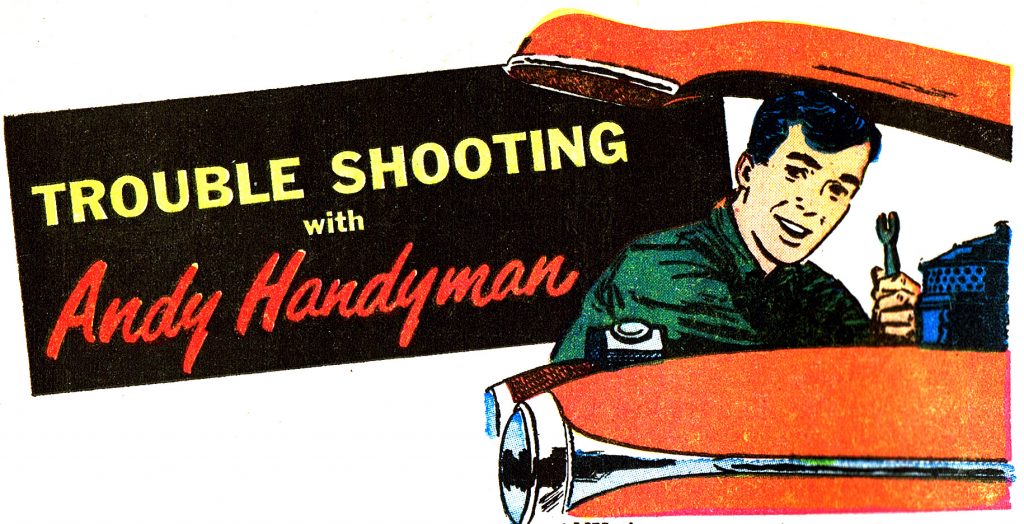
ANY time a car won’t start, there’s a reason.. If the starter has plenty of pep and there’s gas in the tank, the trouble probably lies either in the ignition or the fuel system. These systematic trouble-shooting checks should help you pinpoint \the fault. You can often fix it right away, but if not you will at least find out which parts must be replaced or repaired.
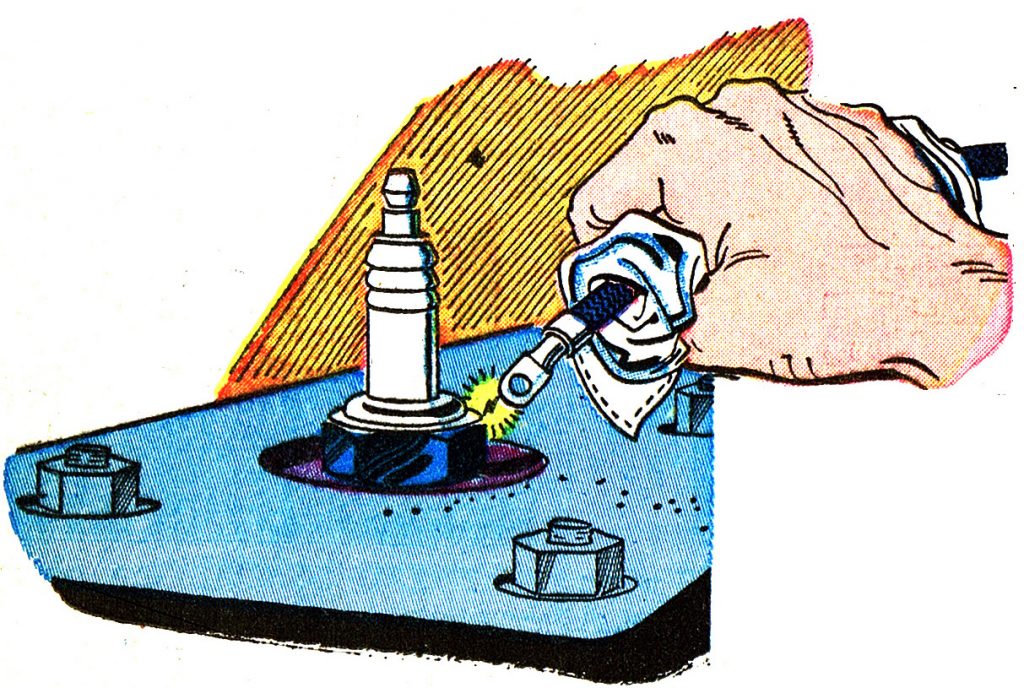
1 CHECK SPARK FIRST. Pull a wire off one spark plug. Wrap a dry handkerchief around it to avoid getting a shock and hold the metal cap of the plug 1/4 in. from the plug base. Have someone turn on the ignition and press the starter. A live, snappy spark should jump from the cap to the plug base. If it does, the trouble is in plugs or fuel system. Skip the next two steps and proceed with Test 4. No spark or a weak one indicates ignition trouble; try Test 2.
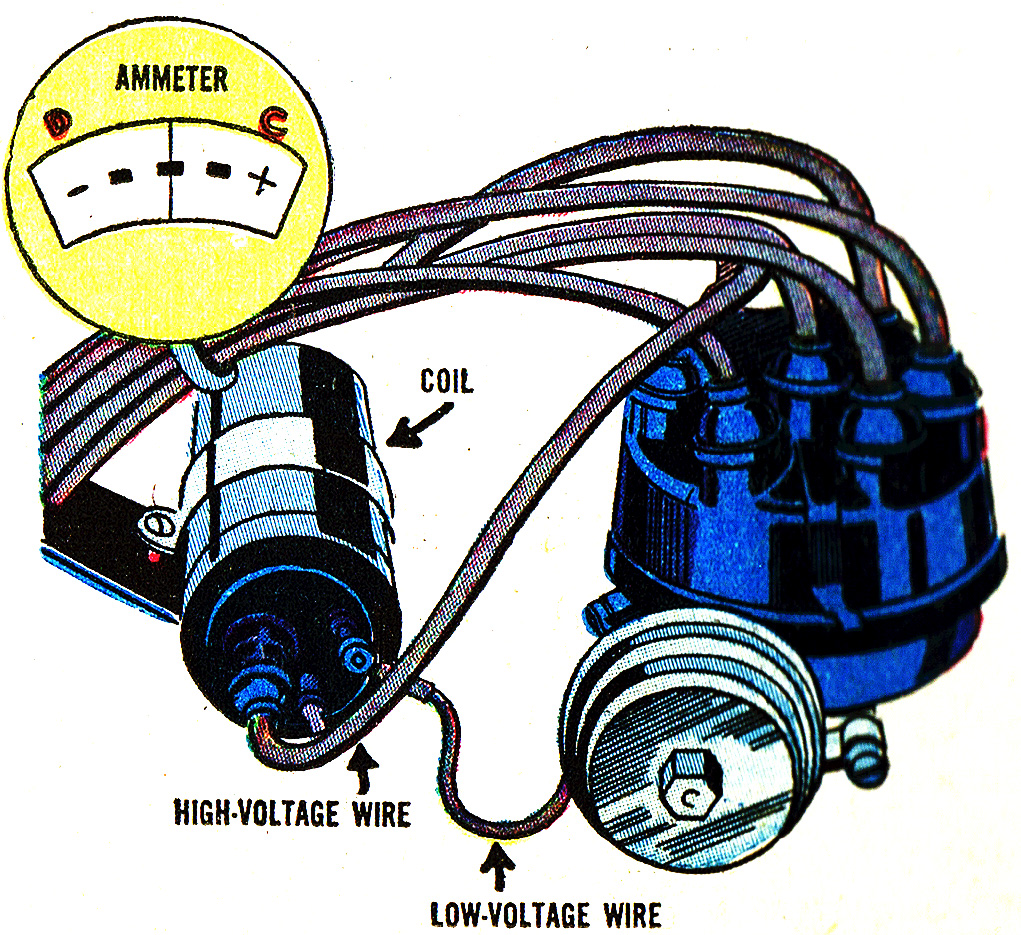 2 IGNITION TROUBLE. Turn on the switch and watch the ammeter while you press the starter. The needle should jiggle on the discharge side. If it just stays dead at zero, look for a loose or broken low-voltage (thin) wire at the coil or distributor. Next, remove the distributor cap. If the contact points do not come together (close) when the starter turns over, they need resetting.
2 IGNITION TROUBLE. Turn on the switch and watch the ammeter while you press the starter. The needle should jiggle on the discharge side. If it just stays dead at zero, look for a loose or broken low-voltage (thin) wire at the coil or distributor. Next, remove the distributor cap. If the contact points do not come together (close) when the starter turns over, they need resetting.
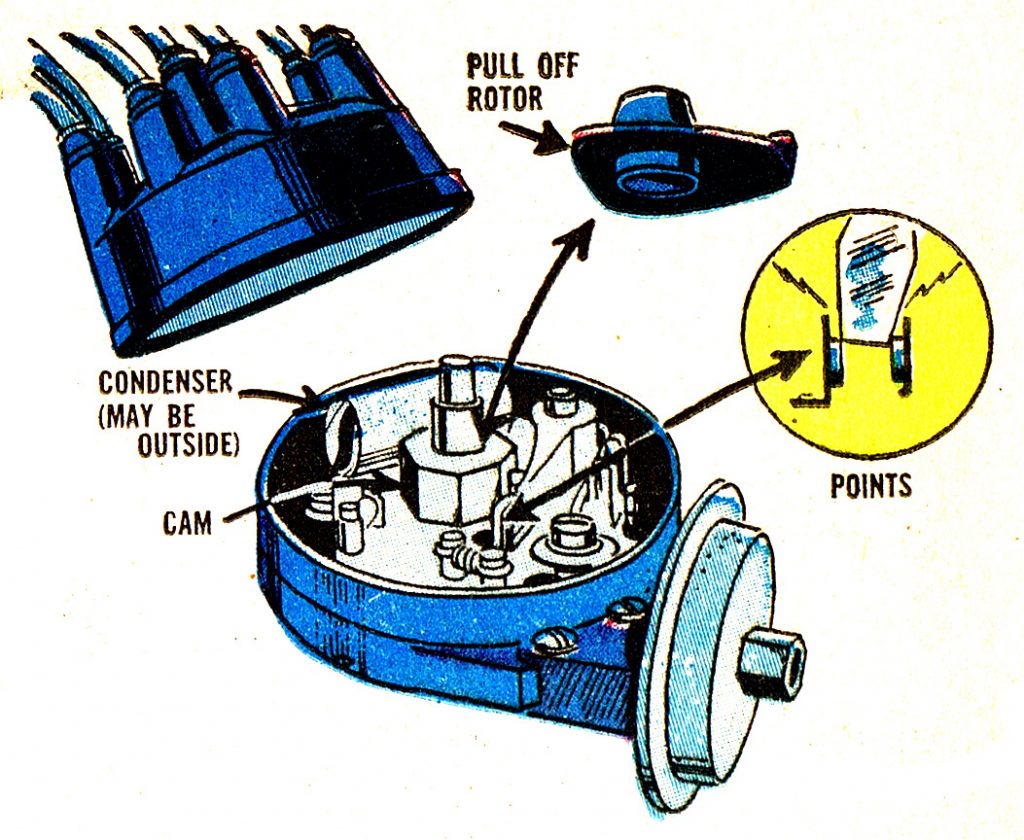
3 IF AMMETER DISCHARGES but doesn’t jiggle, see whether the points open and close when the starter is cranked. If not, they need resetting. If they open, tickle the starter until the distributor cam comes to rest with the points open. Leave the ignition turned on and bridge the points with the tip of a screwdriver. This should draw a spark. If it doesn’t, the condenser is bad and must be replaced. Look also for a cracked distributor cap, loose high-voltage wire from coil to distributor or a broken spring on the rotor. Any of these could cause a weak spark in Test 1.
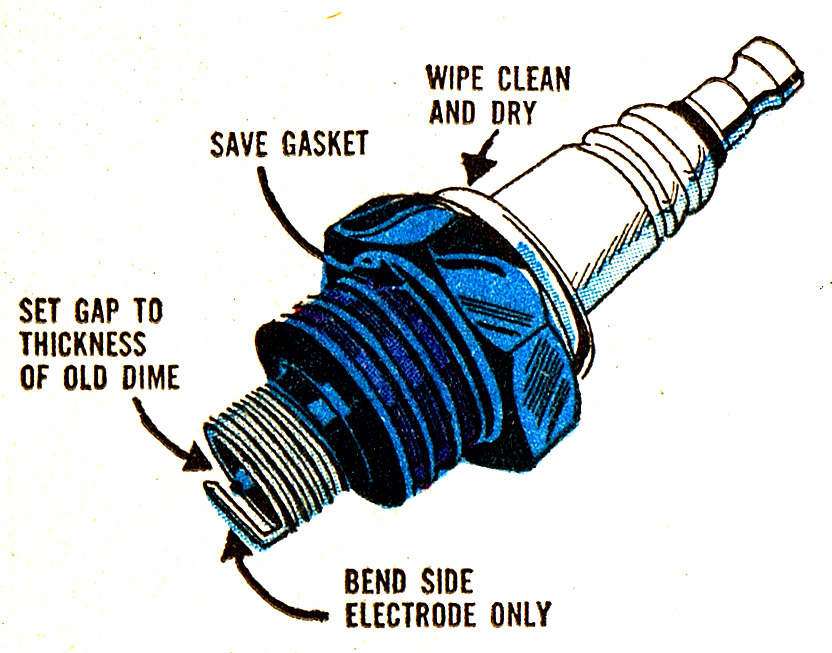
4 PLUG TROUBLE may be nothing more than dirt or moisture on the porcelain. Wipe plugs clean and try the engine. If it doesn’t start, take out a plug and examine its end. If there is gasoline on the end, fuel is reaching the cylinders as it should; the plugs themselves, then, are probably at fault. Remove them and regap electrodes to the thickness of a thin dime.
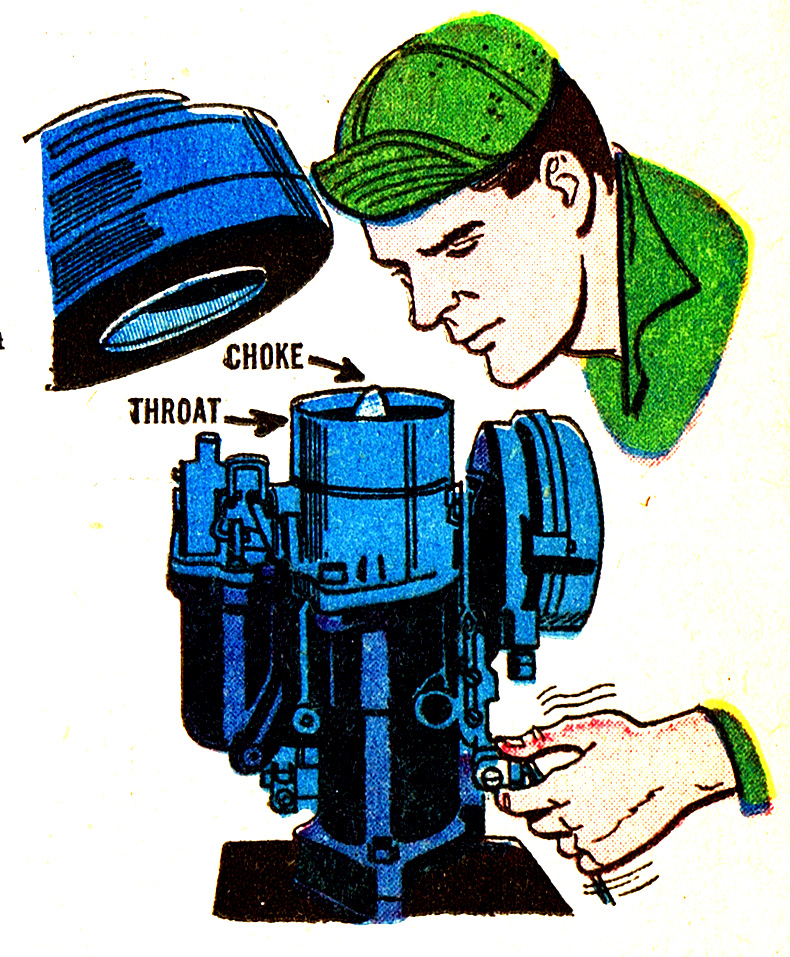
5 DRY PLUG END (no gasoline dampness) may mean that the engine isn’t getting fuel from the carburetor. Remove air cleaner and look down into the throat of the carburetor. Work the throttle link (the heavy rod or wire that connects to the accelerator pedal). You should be able to see gasoline squirt into the throat of the carburetor. If your car has an automatic choke, see whether it closes when the starter turns over. If it doesn’t, hold a flat board over the carburetor throat and crank the engine. If the engine kicks over, yank the board away fast.
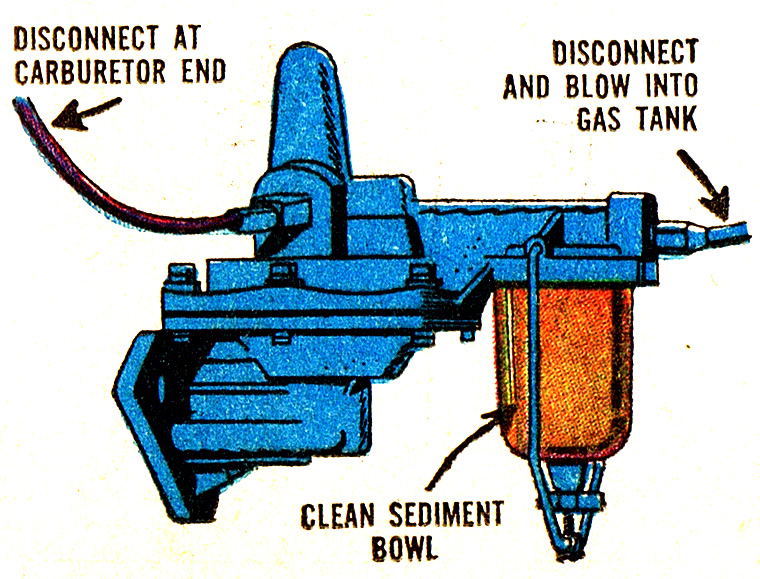
6 NO GAS SQUIRT in the carburetor puts the fuel pump on the spot. Disconnect the line from the pump at the carburetor end. Have someone crank the starter. Gas should squirt out of the end of the tube. If it doesn’t, disconnect the other line (from pump to gas tank) and blow through it while someone presses his ear against the gas tank. If he doesn’t hear gas gurgling, the line is plugged. Use a tire pump to blow it open. If gas does gurgle in tank, the fuel pump itself is defective. You can buy a new fuel- pump kit to fit your car. Instructions for replacing the pump diaphragm come with the kit.